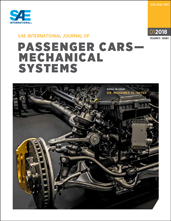One method to lower noise in a cabin is to position damping layers on vibrating panels, thereby reducing their radiated power. To assess the damping effect, criteria like the ERP (equivalent radiated power) are widely employed, which estimate the radiated sound power of a panel without taking into account the actual complex system.
Advantageously only a part of the structure has to be modeled, but the optimal solution found on the simplified model then often fails for the complete, coupled system, especially if several variants of a cabin have to be considered. Hence, it is proposed to use the structure-only optimization for identification of a set of candidate solutions for optimal positioning of damping layers. These candidate solutions used as initial designs for the coupled investigations should be well distributed in the design space to avoid being wrongly stuck in an optimum with inferior coupled performance.
Evolutionary optimization strategies are especially suited for such a multi-modal optimization to derive a candidate set of local optima. They perform better with a small number of design variables, which is achieved by a special parametrization approach for shape and position of damping layers suggested here. This enables the use of a multi-modal optimization method for the positioning of damping layers, which identifies not only one optimal position, but a set of good candidate solutions (set of local minima) on the coarse structure-only model, which are applied to several cabin variants and may be used as initialization and acceleration of coupled optimization.
